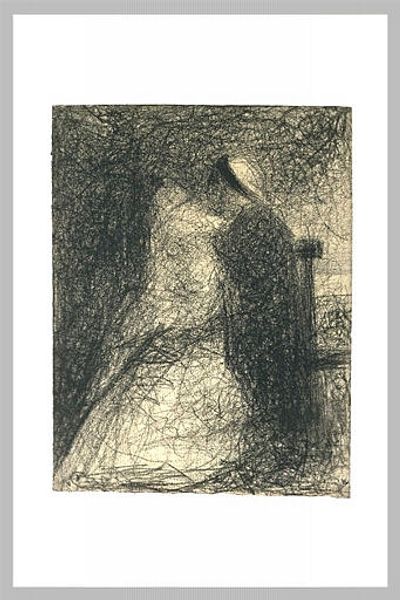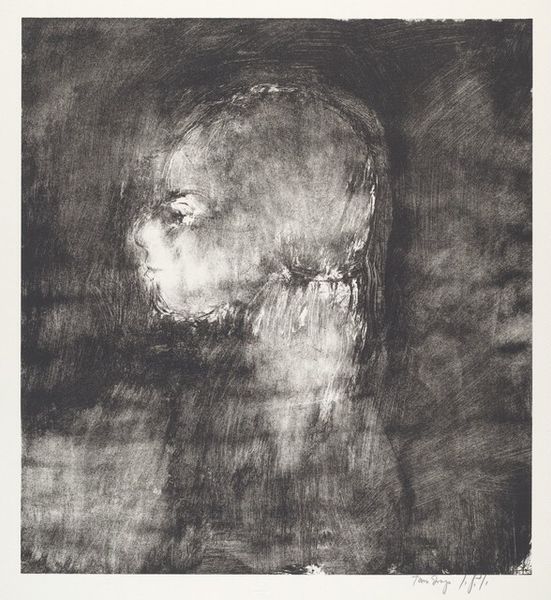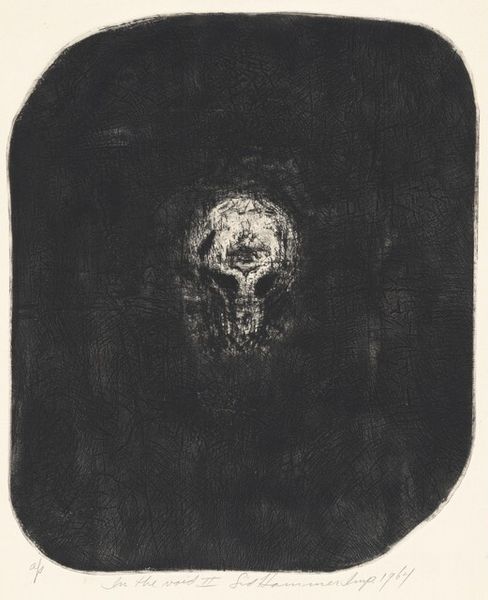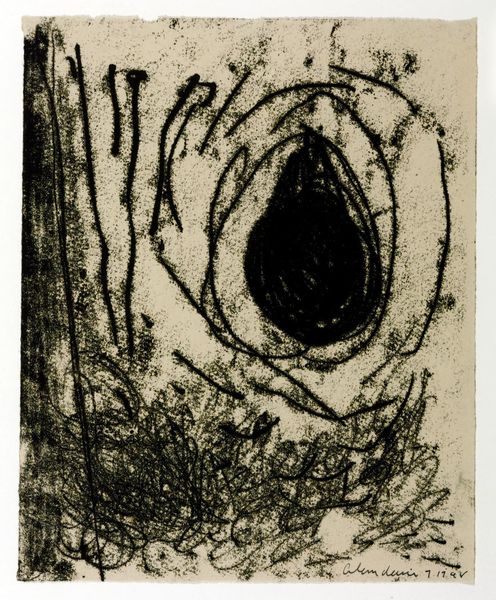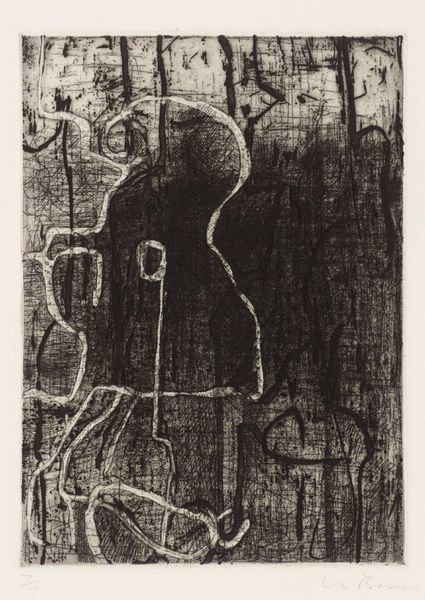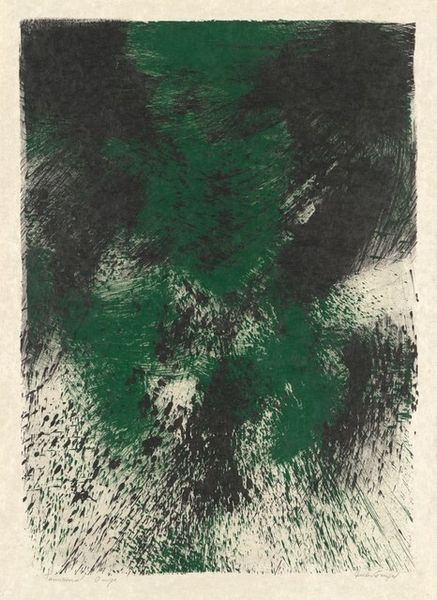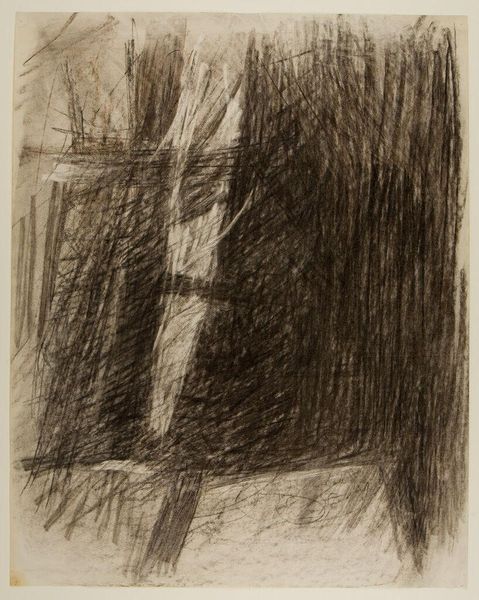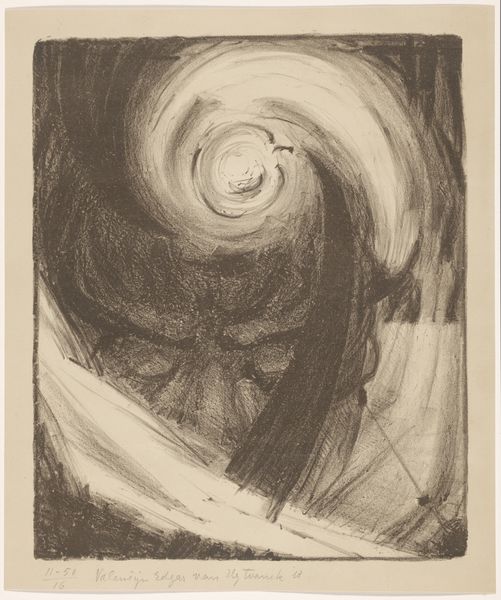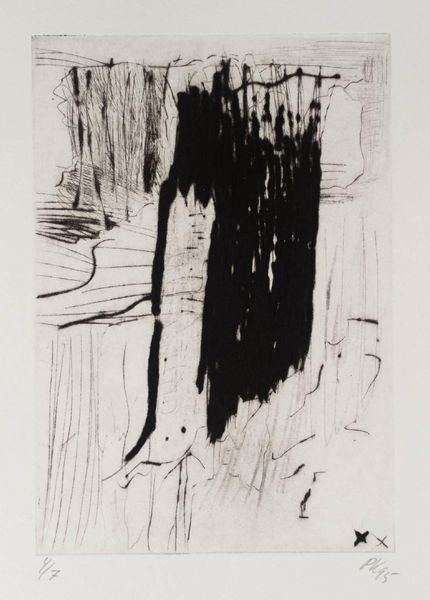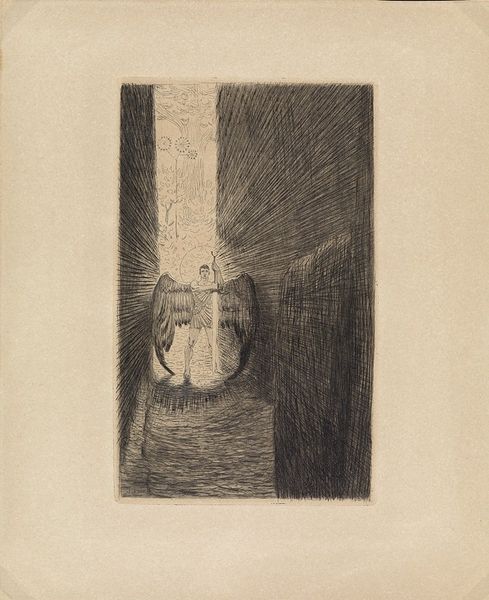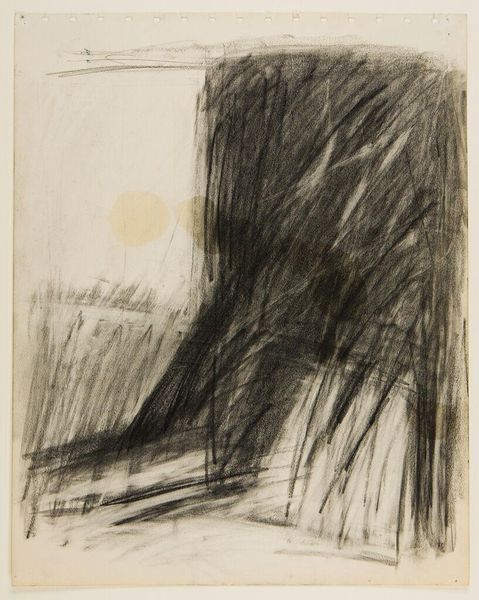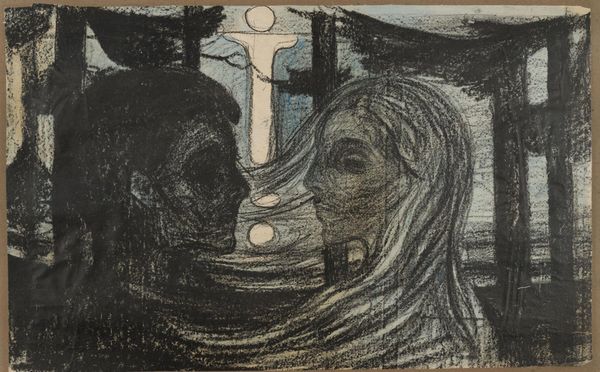
drawing, graphite
#
portrait
#
drawing
#
graphite
#
post-impressionism
Dimensions: 31.5 x 24.9 cm
Copyright: Public domain
Editor: This is Georges Seurat's graphite drawing, "At work the land: man's face in profile, leaning forward." The somber lighting gives it such a weighty feel. I'm curious, what social narrative do you see reflected in this work? Curator: This drawing invites us to consider the intersection of labor, identity, and representation. Seurat, often celebrated for his pointillist paintings depicting leisure, also explored the lives of working-class individuals. The hunched posture, obscured features, and the title itself draws attention to the physical toll and the often-unseen labor that sustains society. How does this contrast with the way we usually depict workers in art? Editor: Well, that’s what strikes me, really—the facelessness and obscurity you mention. We’re left without the individuality you see in many portraits. Curator: Exactly. And it's crucial to consider what the drawing obscures as much as what it reveals. We must ask who is deemed worthy of clear representation, of visibility? Consider also that at the time, the role of the working class and peasantry were hotly debated in the burgeoning socialist movements. How does this resonate with contemporary debates about class, labor, and visibility? Editor: I guess I hadn't considered how invisibility could itself be a statement. It’s definitely given me something to think about in relation to contemporary labor issues. Curator: Precisely. By grappling with the way this work reflects and refracts social realities, we can gain insight into the persistent challenges of representation and social justice that extend far beyond Seurat’s time. Editor: This reframes my whole understanding; thanks for opening my eyes to these connections.
Comments
No comments
Be the first to comment and join the conversation on the ultimate creative platform.

